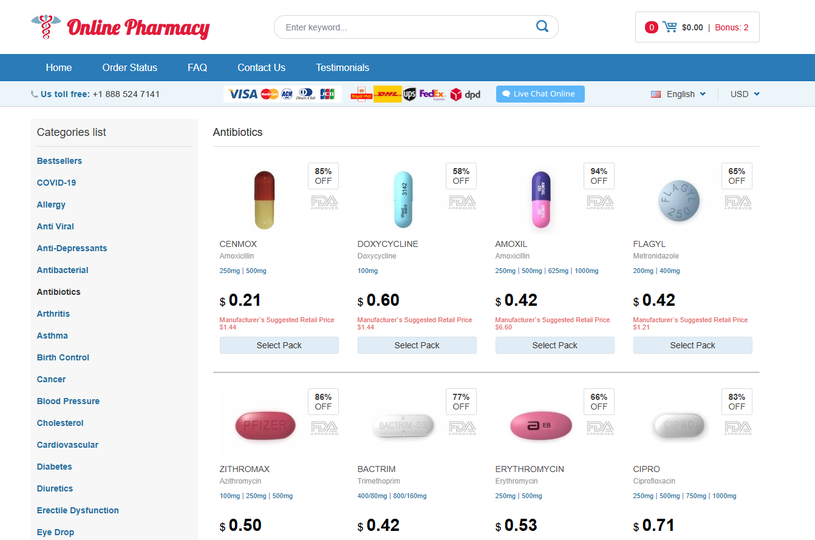To Buy Augmentin No Prescription Visit Our Pharmacy ↓

Tips for Administering Augmentin to Children
The phenomenon of antibiotic resistance is not new; it dates back to the time when antibiotics were first used in the treatment of bacterial infections. A common myth is that Augmentin causes severe adverse reactions in most users. By promoting responsible antibiotic use and considering alternative treatment modalities, the healthcare community can work towards mitigating augmentin resistance and preserving the effectiveness of this essential medication. By being proactive and informed, individuals can better manage and address any potential side effects that may arise during their use of Augmentin. Therefore, the choice of antibiotic depends on the type of infection, its severity, and the patient's medical history. This unique property makes augmentin an invaluable option when treating resistant infections, offering healthcare providers an alternative when standard penicillin fails. Missing doses or taking them at irregular intervals can lead to treatment failure or antibiotic resistance.
Importance of Staying Hydrated during Treatment
Always consult your healthcare provider or pharmacist before starting any new medications to ensure they do not interfere with **augmentin**. Each time he experienced an infection, he would suffer from intense pain, frequent headaches, and difficulty in concentrating. This powerful drug consists of two active ingredients: amoxicillin and clavulanic acid. Augmentin, an antibiotic medication, has proven its effectiveness in treating sinusitis time and time again. Augmentin, a powerful antibiotic medication, demonstrates remarkable efficacy in treating a wide range of bacterial infections. However, there may also be instances where the side effects are more severe or persistent. This ingenious synergy expands Augmentin's efficacy against bacteria that would otherwise resist typical penicillin antibiotics.
Possible Side Effects to Look Out for
Augmentin, the Sinus SaviorWhen it comes to sinus infections, the healing potential lies in the power of Augmentin. Pharm Land professionals constantly encounter label sticker shock while filling scripts for alternative medications due to augmentin resistance. Without this protein, the bacteria are unable to build and maintain their cell walls, leading to their eventual death. Probiotics and adequate nutrition can help maintain gut health, counteracting some gastrointestinal side effects. Understanding the proper dosage and administration of Augmentin is crucial for effectively treating dental infections. These symptoms are usually mild and resolve on their own, but it is important to stay hydrated and replenish electrolytes if experiencing diarrhea or vomiting. While not everyone experiences these side effects, being informed can help ensure responsible usage.
Safety Precautions and Side Effects to Know ⚠️
Your healthcare provider will be able to evaluate your symptoms, determine if they are related to the medication, and provide suitable advice or alternative treatment options. In the battle against augmentin resistance, several strategic approaches have been identified. Real-life experiences underscore the need for caution, as evidenced by reports where patients had gone through the Drive-Thru, ignoring the Sig, resulting in potent side effects. By seeking medical guidance, you can ensure the responsible usage of Augmentin and obtain necessary support to manage any adverse effects effectively. However, it is important to be mindful of the types of food consumed while on the medication. These programs focus on optimizing the selection, dosage, and duration of antibiotic treatments to minimize the development of resistance. Narrow-spectrum antibiotics are typically favored when the causative pathogen is clearly identified, enabling a more focused attack.
The Role of Augmentin in Treating Sinus Infections
Do not take Augmentin if you have experienced an allergic reaction to it or other antibiotics in the past. The combination of ingredients in Augmentin helps to combat bacterial resistance, making it a valuable tool in pediatric healthcare. To stay on track, set up a daily routine for taking augmentin at the same time each day. Concurrent use of allopurinol, used in the treatment of gout, may increase the likelihood of allergic skin reactions when taken with Augmentin. While not everyone may experience these side effects, it is important to be aware of them and to know how to manage them if they do occur. Additionally, alcohol consumption should be avoided or limited as it can interfere with the effectiveness of Augmentin and increase the risk of side effects. By engaging in open communication with a healthcare provider, parents can ensure the correct administration of augmentin and mitigate any risks that may arise.
Expert Strategies to Counteract Gastrointestinal Discomfort
Your healthcare provider can offer valuable insights on mitigating the effects of Augmentin on your stomach health, promoting a smoother recovery process source 2.. Meanwhile, clavulanic acid operates as a beta-lactamase inhibitor, neutralizing the defensive enzymes bacteria produce to resist amoxicillin’s effects. Administering it at the same time each day will better help it become a part of their daily routine. Long-suffering individuals who faced constant headaches and the inability to breathe freely due to blocked sinuses shared that, within days of starting Augmentin, they began to experience clear breathing passages and a reduction in overall discomfort. Augmentin, comprising amoxicillin and clavulanate potassium, is an antibiotic formulation that significantly broadens the scope of bacterial eradication. Augmentin's journey from development to public use is marked by a rigorous approval process, crucial for ensuring its safety and efficacy. It contains a combination of amoxicillin, a penicillin-type antibiotic, and clavulanate potassium, which helps to prevent bacterial resistance by inhibiting the enzymes that bacteria use to destroy antibiotics.
The Future of Antibiotic Treatments
In considering the future landscape of Augmentin resistance and research, one can anticipate a continued and perhaps escalating battle against evolving bacterial defenses. Unlike standard antibiotics, which may fail against resistant strains, Augmentin’s formulation is designed to overcome this challenge, offering a more robust option for treating persistent infections. Its mechanism disrupts bacterial cell wall synthesis while counteracting resistance enzymes, allowing it to target persistent infections effectively. Remember, your health and well-being are paramount, so it is always better to be safe and consult with a medical professional if you have any concerns. The unique properties of Augmentin make it an important tool in fighting bacterial infections and saving lives. This powerful antibiotic not only fights the infection but also provides efficient relief. The synergy of its components, namely amoxicillin and clavulanic acid, is what makes Augmentin more effective than other antibiotics that target only one component of bacterial cell walls.
Augmentin Is Not Just a Strong Antibiotic
This dual-action approach enhances the spectrum of Augmentin’s bacterial eradication capabilities, making it a go-to solution for a wide array of infections. Augmentin's ability to overcome antibiotic resistance makes it a trusted option in the medical community. Additionally, they can provide valuable insights on how to best incorporate augmentin into your daily routine for optimal results. The unique combination of amoxicillin and clavulanate potassium in Augmentin helps to enhance its effectiveness against a wide range of bacteria. Contrastingly, targeted or narrow-spectrum antibiotics are designed to combat specific types of bacteria. It's important to follow the doctor's instructions carefully when taking augmentin, and to report any unusual symptoms or side effects right away. Enter clavulanate, a revolutionary compound medication.
Comparing Augmentin with Penicillin-based Antibiotics
By unlocking its healing potential, Augmentin provides a painless solution for sinusitis sufferers. This misuse can occur with any antibiotic, not just Augmentin. Its potent dual-action mechanism consists of amoxicillin and clavulanate potassium, working together to combat bacterial growth and ensure a more comprehensive treatment approach. To minimize discomfort, it's advisable to take Augmentin with food and to stay hydrated. Factors such as prescribing antibiotics for viral infections, which are immune to their effects, or not completing full courses of treatment, have allowed bacteria to adapt and develop mechanisms to survive the onslaught of antibiotic agents. It's important to complete the full course of treatment, even if symptoms improve before the medication is finished. Doctors often write a **script** for Augmentin to treat infections like sinusitis, pneumonia, and even urinary tract infections.
Uncovering the Benefits of Synergy in Augmentin's Combination
The dual action of Augmentin has made it particularly useful in treating infections known for their resistance potential, such as those affecting the respiratory tract, skin, and urinary systems. Symptoms might linger even after completing your course, but this doesn't necessarily mean the medication failed or that you need to continue it beyond the prescribed duration. Some medications that may interact with Augmentin include probenecid, methotrexate, and certain blood thinners. If you Rxperience severe or persistent side effects, seek medical attention Immediatly. This synergistic combination allows Augmentin to breech the defenses of beta-lactamase producing organisms, hence expanding its antimicrobial repertoire to include species normally insusceptible to penicillins. They can also provide insights on handling and administering Augmentin correctly to maximize its benefits and minimize risks. Other rare but serious side effects of augmentin include liver damage, seizures, and changes in blood clotting.

